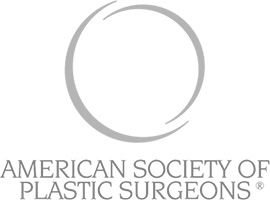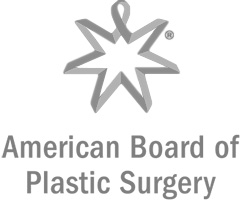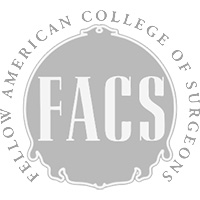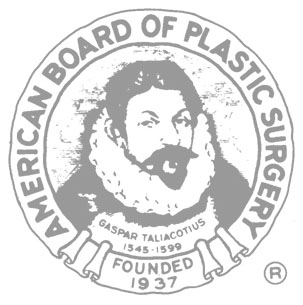RECOVERY INSTRUCTIONS
– BODY CONTOURING PROCEDURES –





In this section, you will find recovery instructions for:
- Arm Lift
- Tummy Tucks
- Inner and Outer Thigh Lift, Vertical Thighplasty
- Lower Body Lift
- Upper Body Lift, J-Thoracoplasty, Reverse Tummy Tuck
- Buttocks Implant
- Buttocks Lift
- Liposuction
- Buttocks Fat Transfer (Brazilian Butt Lift)
The results and outcome of your plastic surgery is largely dictated by your healing and recovery. This is as important as having a great surgery itself. Thus, it is imperative that your recovery is planned well and this time is treated as a “Recovery Vacation”. That means minimal activities, optimal nutritional intake, rest, healing, and taking it super easy. Refrain from leaving your house unless coming for follow ups or until cleared to do so by our team.
Arrange to have a care giver to help you while recovering. A care giver should be helping you with:
- Ambulation
- Meals and Eating
- Dressing Changes and Drain care
- Getting in and out of chair/bed

Your recovery time will depend on how quickly your body heals and how extensive the procedure is. Typically, incisions take 6 weeks to heal. Healing is not only necessary for skin incisions but also the deeper fatty layers. Skin typically appears to be mostly healed by 3 weeks but the deeper layer takes much longer and you need to be patient for optimal healing.
You can go home with a friend or family member after spending an hour or two in the recovery room. We can also provide a private duty nurse to care for you at home. The key to a successful recovery is to abide by Dr. Agha’s instructions.
General Instructions for Body Contouring Surgeries
Day of Surgery- When you wake up from your procedure, you will be in the recovery room and will be wearing compression dressings or a garment. You should plan to wear compression garments for 6-12 weeks following surgery. This controls swelling, conforms the underlying tissue, and aids in skin contraction.
Caregiver- When patients leave the surgery facility to go home, they are groggy for about 12 hours or overnight. It is very important to have an adult to assist you with getting home and taking your medications for at least the first 24 hours. However, a caregiver can be of immense help for the first 7-14 days after many body contouring surgeries and even longer after a lower body lift.\
Early Ambulation- You’re likely to feel sore for a few days, but you should attempt to get out of the bed in 24 hours. This is the best way to reduce the chance of getting a blood clot in the legs. Walk every 3 hours indoor for 5 to 10 minutes with help within your house. Most of your discomfort can be controlled by the prescribed painkillers.
Nausea- Most people are nauseated during the first 24-72 hours. To reduce this, we suggest that you take your nausea pill one hour before taking your pain medication or antibiotics.
Sleep- If you have had a tummy tuck or a lower body lift, attempt to sleep on several pillows on your back. Also, keep your legs slightly bent at the hips. This ensures that the tension on your front incisions are minimized, reducing pain and resulting in a thinner scar.
Painkillers- You’re likely to feel sore for a few days, but you should be up and walking within your home in 24 hours. Most of your discomfort can be controlled by the prescribed painkillers.
Pain Pump- You may have a pain pump at the surgical site. The pain pump releases a constant dose of a long-lasting numbing medication known as Marcaine. You do not have to do anything to the pain pump.
Do not subject your surgical incisions to excessive force, abrasion, or motion while it’s healing.
Dressing – After surgery, it is important to have your incisions dabbed clean daily with Dakins solution and then covered with ABD dressings.
Drains: Drains will remove fluid that exudes from tissues after surgery. The sooner the fluid is removed, the faster the tissues will heal back. Thus, drains are your friends. They must be secured, cleaned with alcohol of Dakins solution twice a day, milked every 3 hours, and emptied a few times a day. Log total drain output per 24-hour periods.
Bruising- There will be bruising at surgical sites as well as in adjacent or dependent areas. For example, you may note bruising and swelling in the back of your thighs and your genitalia. This is not because these areas were actually liposuctioned. However, bruises usually move downward due to gravity, and can thus temporarily accumulate in the genitalia. Occasionally, bruising can last a longer time. Sun tanning after surgery can cause these bruises to become long-lasting skin stains.
Shower: Do not bath or Shower till cleared by Dr. Agha. All drains must be removed before you can shower. Also, your incisions must be sealed closed. Tap water has bacteria such as Pseudomonasin it which can cause infection of the surgical site and openings. Thus, patience is a must and only after our team clears you then you may shower.
Constipation: You may take OTC laxatives (such as Colace) to avoid developing constipation on narcotics. Should you develop diarrhea, you must inform our team immediately.
Post-operative Visit- This will be scheduled before your surgery. Have a friend or a family member accompany you to the clinic and back to your home.
Swelling- Swelling after surgery is common and to be expected. Swelling is not symmetrical and one side may swell more than another. Swelling may take 6-12 weeks to subside.
Driving – You may drive when driving does not cause pain. This usually occurs in 2-3 weeks. It is not safe to drive a car within twenty-four hours of taking pain medication as your reflexes and alertness may be altered.
Walking– You will probably be unable to stand fully upright for 10-14 days after a tummy tuck or a lower body lift. Using a walker and hunched over, start walking as soon as possible, usually the evening of surgery. This is the best way to reduce the chance of blood clotting in the legs.
Light Exercise- We recommends light exercise to prevent blood clots. Light exercise includes walking, as well as moving your arms and legs on regular basis while sitting. You should avoid all activities that can put excessive force or stress on your incisions and the operative area until you have fully healed.
Activities- During the first 3-4 weeks after surgery, avoid activities that raise your blood pressure, stress the operative site, or pull the incisions. These could cause bleeding at the operative site, which could result in a hematoma (collection of blood). They can also worsen swelling and result in fluid accumulation (seroma) and can also break your sutures and result in opening of the suture line or widening of the scar).
Walking is the safest exercise, especially during the first week. Avoid exercises which directly stress the area of your surgery for a full 6 weeks. After this period, cardiovascular activities, such as riding a stationary bicycle or brisk walking, may be initiated. Running at this point may be premature. Avoid heavy lifting, contact sports, and jogging for up to 8 weeks. Eight weeks after surgery, you will be nearing your pre-operative state. Avoid pulling at the surgical area to maximize healing and minimize scarring.
Healing- You will need 4-6 weeks to recover and heal from a procedure. The typical healing time is about 6 weeks for most breast and body procedures.
Scarring- Every person’s body is different, and many factors contribute to scar healing. Your scars will be firm and pink for about six weeks. Non-smokers and those who follow the Our Enhanced Recovery Program have a better chance of rapid healing and thinner scarring. Expect to wait at least nine months before your scars lighten in color and become as flat as the rest of your skin.
Numbness- All surgical areas may stay numb for weeks to months. Massage will help to desensitize your skin in order to avoid hypersensitivity or skin irritation.
Follow-ups- Regular check-ups protect against complications. We will be recommending scar treatments during your follow up appointments at 3, 6 and 12 months.
Emergencies – Some discomfort is expected following your surgery. Be sure to tell us if:
- There is an increase in swelling, pain, redness, drainage, or bleeding in the surgical area.
- You develop fever, dizziness, nausea or vomiting, or a general ill feeling.
- If you experience shortness of breath, chest pains, or unusual heartbeats, seek medical attention immediately. Should any of these complications occur, you may require hospitalization and additional treatment.
